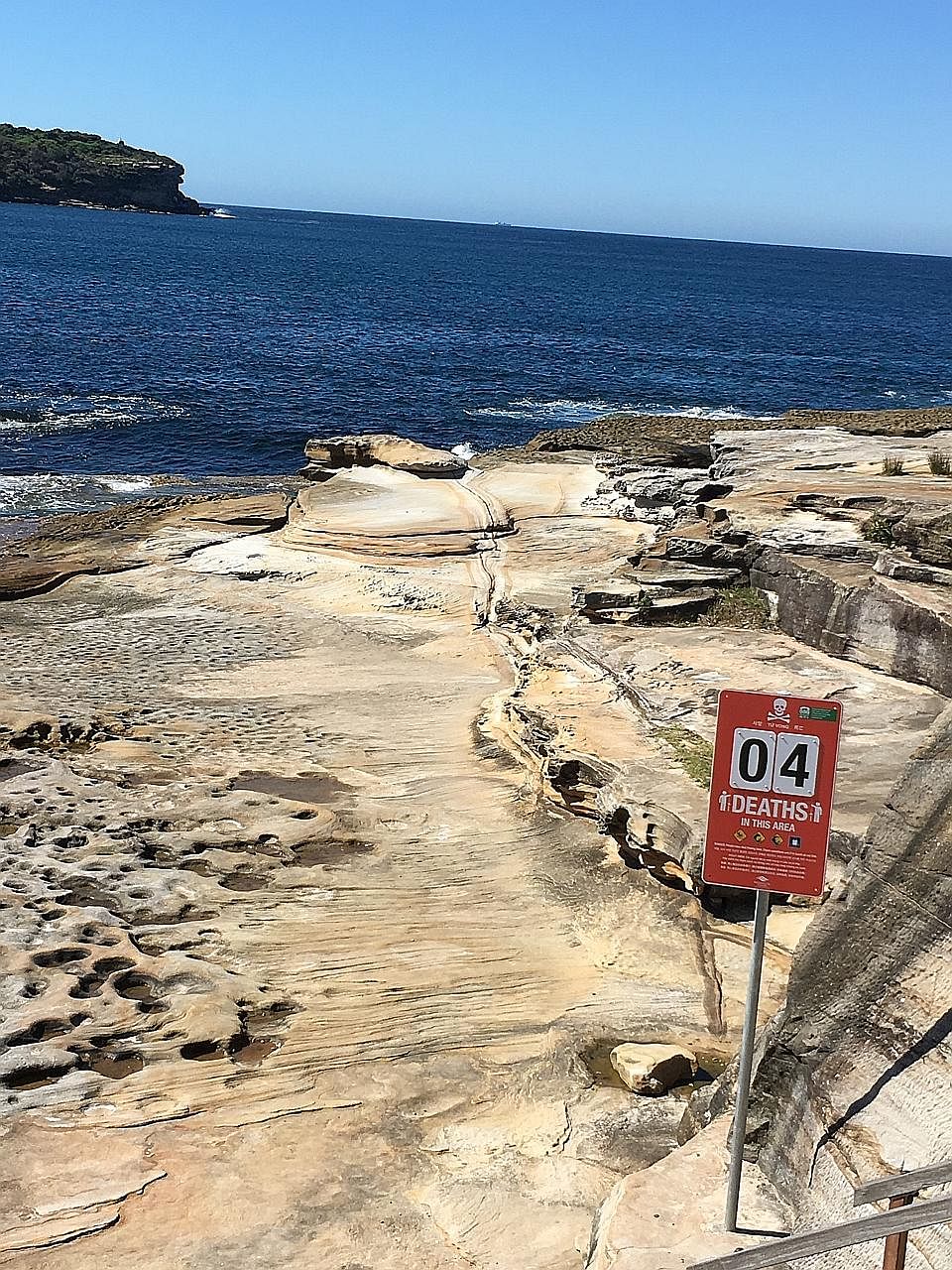On a calm autumn day two years ago, Mr Hua Huiqing, 24, and Mr Zhang Dingding, 20, joined four fellow Chinese students for an afternoon of fishing on a rock ledge north of Sydney.
They were presumably unaware that the spot they had chosen, Wybung Head, is nicknamed "Drowning Rocks". It has claimed 16 lives in the past nine years.
Shortly before sunset, the group was preparing to leave when Mr Hua's girlfriend, Ms Zhua Shihu, who had her back to the ocean, was suddenly swept into the water by a large wave.
Mr Hua helped to untangle his girlfriend from a fishing line and she made it back to the rocks, but he was taken by the waves. Trying to assist, Mr Zhang was also swept into the water. Mr Hua's body was found floating in the water the next morning. The body of Mr Zhang was never recovered.
Tragically, the ledge at Wybung Head is just one of numerous notorious death spots around the coastline in Australia, where an average of 14 rock fishermen die each year in what has been described as the nation's most dangerous sport. Some places are known to have had dozens of deaths.
The growing number of rock- fishing fatalities has prompted a push by local and state authorities to improve safety and increase awareness of the risks.
The New South Wales government announced last month that all rock fishermen will be required to wear life jackets while fishing at high-risk spots or face tough fines.

"If you enjoy rock fishing, that is fantastic, but we want you to get home," the state's emergency services minister, Mr David Elliott, told ABC News. "This is legislation that has been forced on the government because people have not heeded the public safety campaigns in the past," he said.
Mr Elliott said many rock fishermen in Australia were not from English-speaking backgrounds and it was difficult to ensure that they were aware of the dangers. The state has had 37 rock-fishing deaths in the past four years.
Local governments have also adopted safety measures.
In the coastal district of Randwick in southern Sydney, which has had one of the highest number of rock-fishing deaths in Australia, the council has begun posting "death scoreboards" at particular spots showing the number of fatalities in the past ten years.
Twelve signs have been installed so far, featuring a changeable tally of nearby deaths with translations in Chinese, Vietnamese and Korean.
Near a sign showing the grim number four in the suburb of La Perouse last week, a Lebanese-Australian man was fishing for bream off a jetty, away from the rocks.
"Rock fishing is not for me," he told The Straits Times. "I would never do it. It is too dangerous."
Many fishermen are unaware of the dangers or the need to take precautions, such as wearing a life jacket or clothes suitable for swimming, and never turning one's back to the sea. A survey of rock fishermen by the Randwick council in 2013 found that 42 per cent were unaware that people had died where they were fishing and 62 per cent would change their behaviour if they were informed by signage about the fatalities.
"Despite the ongoing warnings and education campaigns, people continue to die from rock fishing," said Randwick's mayor, Mr Noel D'Souza, in a statement.
"This is a dangerous pastime and it is enormously sad to think of the pain and anguish that the families of the 17 men who died while rock fishing in our area (in the past decade) must be going through."
Some councils have installed anchor points at dangerous spots to allow fishermen to stay tethered to land. More dangerous spots are also being fitted with "angel rings"- life buoys, which can be thrown to people to help them stay afloat in the water until help arrives.
At Wybung Head, the local council is considering installing a life buoy in the water to help people who have been washed into the sea.
One of the Chinese students involved in the rescue in 2014, Mr Lu Zepeng, gave evidence at an inquest last year into the deaths of nine rock fishermen, including Mr Hua and Mr Zhang.
Mr Lu said he had never seen any educational material on the dangers of rock fishing and had not read signs that had been installed at Wybung Head.
"He said that if he had a life jacket on, he could have jumped in to save his friends and that it would have been best if everyone was wearing a life jacket," the coroner stated.
